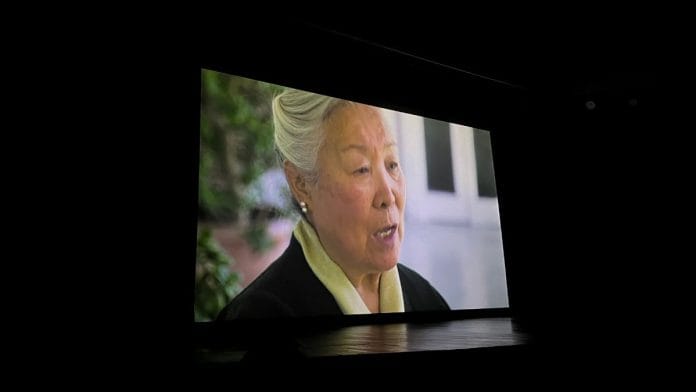New Delhi: The Dalai Lama is a household name. His sister Jetsun Pema, who has devoted her life to educating children-in-exile through the Tibetan Children’s Village, has largely stayed out of the spotlight.
But a film screening at Delhi’s India International Centre placed Pema, lovingly referred to as Amala, meaning mother, centre stage. Amala: The Life and Struggle of Dalai Lama’s Sister, a documentary directed by Geleck Palsang and produced by the school’s alumni, traced her life in all its colours—from a nine-year-old refugee in Darjeeling to the mother (and now grandmother) to thousands of Tibetan children.
“Amala did far more than just build schools. She nurtured a generation in exile. She instilled in us not only knowledge—but identity, resilience, purpose, passion,” said an alumnus of the school.
The 50-minute documentary features vignettes of 80-year-old Amala’s life—stringing together various seemingly disjointed strands that culminate in TCV becoming the institution it is today. Following Mao Zedong’s death in 1976, fact-finding missions were sent in to gauge the extent of the damage that Tibet had withstood. The first mission was in 1979.
Amala was part of the third mission and was aghast to see that children weren’t attending school.
“We realised how bad things were. There were tents, but the children…their hands were rough. They had been working in the fields,” said Amala, who was also interviewed for the film.
Also read: ‘Dalai Lama will live on, Xi Jinping will die’—former Tibet PM on reincarnation geopolitics
Mother of the snowland
Tibetan Children’s Village School was started in 1960 by Amala’s elder sister, Tsering Dolma Taka, who died of cancer and passed the baton down to her sister. The school had an open-door policy—they never said no to any child in need.
Amala recalled 64 refugee children who arrived from Nepal after trekking for months. All of them had severe diarrhoea. Images from the film show toddlers walking around, their stomachs distended from malnutrition. Four died in a single night. Despite the availability of Red Cross doctors in the upper reaches of Dharamshala, where TCV is still located, the infrastructure to treat all 64 simply did not exist.
“Every two to three days, children would die,” said Amala, her face lined and hair tied in a grey bun.
The film also consists of interviews with Amala’s friends and colleagues, as well as TCV alumni, who spoke of how the school gave them a sense of identity and place. It allowed them to become more than just refugees.
Amala was also the Education Minister of the Tibetan government in exile. Having noticed how her students went to “mediocre” Indian colleges where they learnt in regional languages, she ensured that Tibetan was introduced in certain universities, like the University of Bangalore.
She was an unwavering advocate for generations of children who lived in an existential loneliness, a permanent state of exile.
One scene in the film, which has footage from Amala’s time in Tibet as a member of the fact-finding mission, shows her surrounded by a sea of people—almost like a political rally.
“For four months, I cried buckets. But the public was ecstatic to see Amala,” said one of her colleagues, who was also part of the mission.
The ultimate reckoning comes at the end of the film. Shot in 2020, a now elderly Amala enters a room in California. Packed with TCV alumni, they begin to sing—part song and part chant. “Mother of the Snowland/We, the children of Tibet, will never forget you,” they recite.
Today, over 40,000 children have graduated from TCV.
Moments of casual joy and humour have also been woven into the film. “I’m not one to stay a nun,” Amala once said, referring to her decision to marry.
(Edited by Theres Sudeep)






